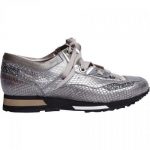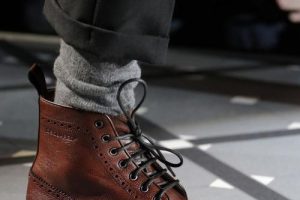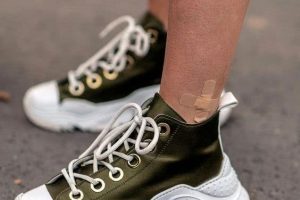Introduction
The world of sports shoes is vast and diverse, catering to a wide range of athletic activities, each with its unique demands. From running to basketball, soccer to hiking, there’s a shoe designed for every sport. In this comprehensive guide, we will delve into the world of sports shoe styles, offering recommendations and insights into the specific needs of different sports. We will not only discuss the functional aspects of these shoes but also provide real-life examples and stories to illustrate the importance of choosing the right footwear.
Chapter 1: The Foundation of Sports Shoes
Before we dive into specific sports shoe styles, it’s essential to understand the foundational elements that make these shoes different from casual or everyday footwear. The key aspects include:
A. Cushioning and Support
- Running Shoes: Running is a high-impact sport that requires shoes with ample cushioning and support. For example, brands like Nike and Adidas have developed advanced technologies, such as Nike Air and Adidas Boost, to provide superior cushioning for runners.
B. Traction and Grip
- Basketball Shoes: Basketball players need shoes with exceptional traction and grip to make quick cuts, stop on a dime, and jump effectively. The Air Jordan line by Nike, endorsed by basketball legend Michael Jordan, is a prime example of shoes designed for the hardwood.
C. Durability
- Soccer Cleats: Soccer players require shoes with durability and specialized studs for excellent grip on the pitch. Brands like Adidas and Puma offer a wide range of soccer cleats, with the Adidas Copa Mundial being a classic example.
D. Ankle Support
- Hiking Boots: Hikers face rugged terrains and uneven surfaces, so they need shoes that offer ankle support and stability. The Merrell Moab and Salomon X Ultra are popular choices among hikers.
E. Flexibility
- Cross-Training Shoes: For cross-training activities like CrossFit, versatile shoes that offer a balance between support and flexibility are ideal. The Reebok Nano and Nike Metcon series are known for their adaptability in various exercises.
Chapter 2: Running into the Right Shoes
Running is one of the most popular forms of exercise and competition worldwide. Whether you’re a seasoned marathon runner or a casual jogger, choosing the right running shoes is crucial.
A. Neutral Running Shoes
For neutral runners who don’t overpronate or supinate, neutral running shoes provide the right balance of cushioning and support. A classic example is the Brooks Ghost series, loved by runners for its comfort and versatility.
B. Stability Running Shoes
Runners who overpronate (inward rolling of the foot) can benefit from stability running shoes. The ASICS Gel-Kayano is a standout choice, offering exceptional support for overpronators.
C. Trail Running Shoes
For those who enjoy off-road running, trail running shoes like the Salomon Speedcross are designed with aggressive treads for superior grip on rugged terrains.
D. Minimalist Running Shoes
Minimalist running shoes, such as the Vibram FiveFingers, cater to runners looking for a more natural, barefoot-like experience.
Real-Life Story: Meet Sarah, an avid runner who was struggling with shin splints until she switched to Brooks Ghost running shoes. The extra cushioning and support helped alleviate her discomfort, allowing her to run longer distances without pain.
Chapter 3: The Slam Dunk on Basketball Shoes
Basketball is a sport that demands quick and precise movements, making the right pair of basketball shoes a game-changer.
A. High-Top Basketball Shoes
High-top basketball shoes, like the Nike LeBron series, provide excellent ankle support and stability, reducing the risk of ankle injuries.
B. Low-Top Basketball Shoes
For players who prioritize agility and speed, low-top basketball shoes, such as the Under Armour Curry line, offer lightweight performance.
Real-Life Story: Michael, a college basketball player, experienced a significant improvement in his game after switching to high-top basketball shoes. They offered the ankle support he needed, reducing his risk of sprains and enhancing his overall performance.
Chapter 4: Scoring Goals with Soccer Cleats
Soccer is a sport where precision and control are paramount, and the right pair of soccer cleats can make all the difference.
A. Firm Ground (FG) Cleats
For standard grass pitches, FG cleats like the Nike Mercurial Superfly offer a balance of traction and maneuverability.
B. Artificial Ground (AG) Cleats
When playing on artificial turf, AG cleats like the Adidas Nemeziz provide the necessary grip and durability.
Real-Life Story: Alex, a young soccer player, struggled with slipping on the artificial turf until he switched to AG cleats. His improved stability allowed him to focus on his game rather than worrying about footing.
Chapter 5: Conquering the Great Outdoors with Hiking Boots
Hiking is an adventure that requires durable footwear to tackle various terrains and weather conditions.
A. Waterproof Hiking Boots
Waterproof hiking boots, like the Columbia Newton Ridge Plus, keep your feet dry and comfortable during wet hikes.
B. Lightweight Hiking Shoes
For day hikes and lighter loads, lightweight hiking shoes, such as the Merrell Moab 2, offer comfort without sacrificing support.
Real-Life Story: Emily and Mark, avid hikers, embarked on a week-long hiking trip through the Appalachian Trail. The waterproof hiking boots they wore kept them dry during unexpected rain, making their journey more enjoyable.
Chapter 6: CrossFit and the Need for Versatile Footwear
CrossFit is a high-intensity fitness regimen that combines weightlifting, cardio, and various other exercises. CrossFit shoes should be versatile to accommodate the diverse workout routines.
A. Stability and Flexibility
Shoes like the Reebok Nano X strike a balance between stability for lifting and flexibility for dynamic movements.
B. Minimal Drop
Minimal drop shoes, such as the Inov-8 F-Lite series, offer a low heel-to-toe drop for a natural feel during weightlifting.
Real-Life Story: Jake, a CrossFit enthusiast, experienced a noticeable improvement in his performance after switching to CrossFit-specific shoes. The stability allowed him to lift heavier weights, while the flexibility enhanced his agility during cardio exercises.
Chapter 7: Conclusion – Your Perfect Fit
Choosing the right sports shoes is a critical decision for athletes and fitness enthusiasts. It can impact your performance, comfort, and even your safety. The key takeaways from this guide include:
- Understanding your foot type and gait is essential when selecting sports shoes.
- Each sport has specific shoe requirements, from cushioning in running to grip in basketball.
- Real-life stories and examples illustrate the importance of choosing the right footwear.
With the right pair of sports shoes, you can enhance your athletic performance, reduce the risk of injury, and enjoy your favorite sports to the fullest.
So, next time you lace up your shoes for a run, step onto the basketball court, or hit the trails, remember the impact of your footwear choice. Your shoes are not just an accessory but a tool to help you excel in your chosen sport.
















Add Comment